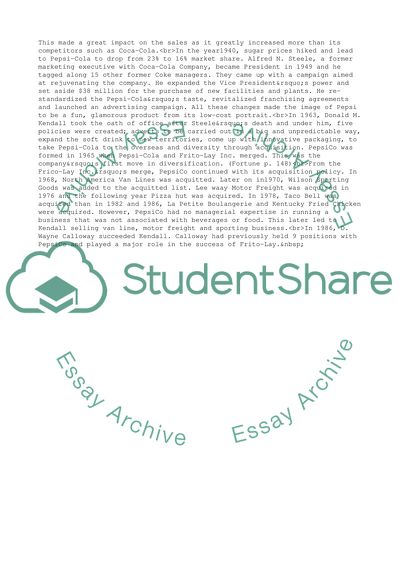Cite this document
(“Pepsi Corporation and Its Subsidiaries Essay Example | Topics and Well Written Essays - 1750 words”, n.d.)
Pepsi Corporation and Its Subsidiaries Essay Example | Topics and Well Written Essays - 1750 words. Retrieved from https://studentshare.org/business/1624907-pepsico-a-view-from-the-corporate-officepepsicos-bid-for-quaker-oats-a-case-study
Pepsi Corporation and Its Subsidiaries Essay Example | Topics and Well Written Essays - 1750 words. Retrieved from https://studentshare.org/business/1624907-pepsico-a-view-from-the-corporate-officepepsicos-bid-for-quaker-oats-a-case-study
(Pepsi Corporation and Its Subsidiaries Essay Example | Topics and Well Written Essays - 1750 Words)
Pepsi Corporation and Its Subsidiaries Essay Example | Topics and Well Written Essays - 1750 Words. https://studentshare.org/business/1624907-pepsico-a-view-from-the-corporate-officepepsicos-bid-for-quaker-oats-a-case-study.
Pepsi Corporation and Its Subsidiaries Essay Example | Topics and Well Written Essays - 1750 Words. https://studentshare.org/business/1624907-pepsico-a-view-from-the-corporate-officepepsicos-bid-for-quaker-oats-a-case-study.
“Pepsi Corporation and Its Subsidiaries Essay Example | Topics and Well Written Essays - 1750 Words”, n.d. https://studentshare.org/business/1624907-pepsico-a-view-from-the-corporate-officepepsicos-bid-for-quaker-oats-a-case-study.


